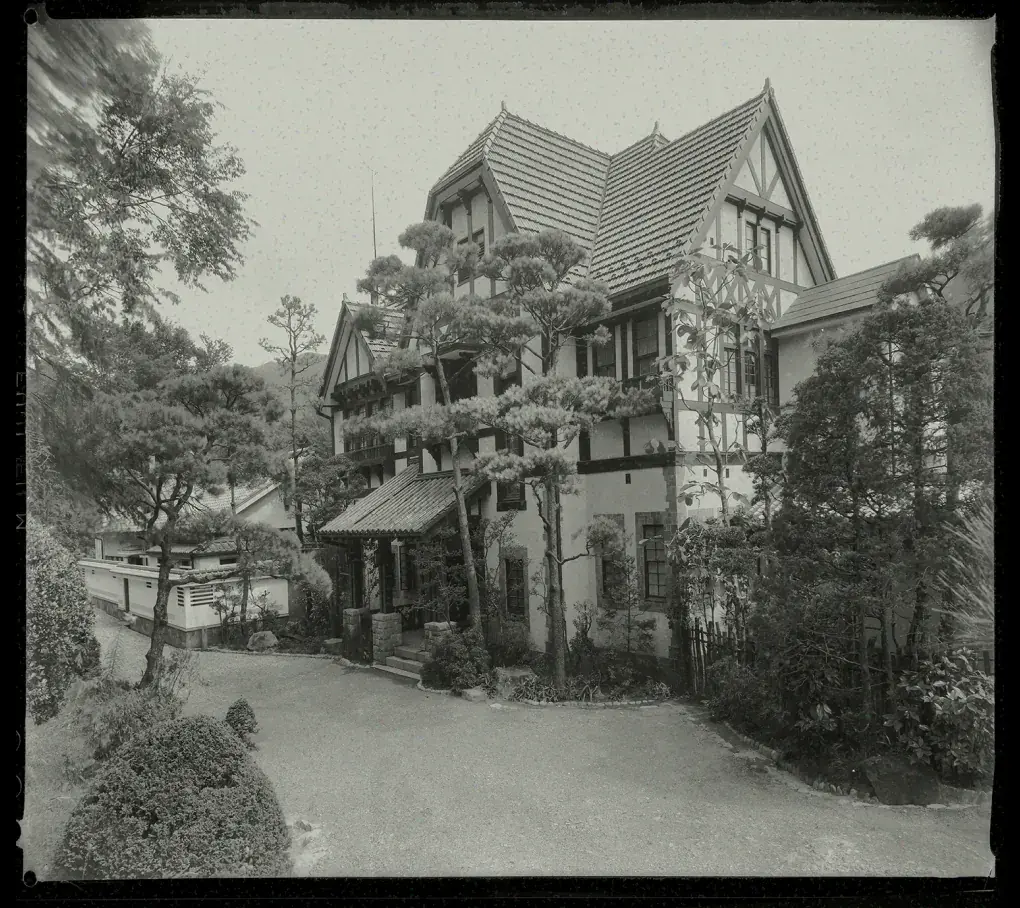Time at GoraKadan
PASSAGEOFTIME
A spirit of quiet welcome has endured since when the villa received Imperial guests. Here, architecture, atmosphere, and the rhythm of time converge to offer moments suspended, where one’s presence deepens and the soul finds rest.
01
Stepping Out of Shoes, Onto Tatami
Each guest room at Gora Kadan is furnished with tatami, reflecting the quiet refinement of traditional Japanese design. An unobtrusive stone and small step mark the threshold, inviting guests into the calm within.

⁑ 沓脱 Kutsunugi
The kutsunugi-ishi is a stone placed at the threshold where people remove their shoes. It originally marked the boundary between the sacred and the everyday, shielding the interiors of shrines and homes from spiritual impurity. Today, people place these stones at verandas and formal entrances. At Gora Kadan, stepping onto this stone before entering a guest room encourages guests to turn inward and experience time with quiet introspection.
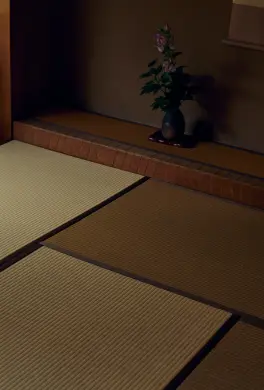
* 畳敷 Tatami
Beyond the kutsunugi-ishi, a space opens, covered in tatami mats. Tatami originated in the Nara and Heian periods, when nobles used them as seating or bedding in wooden-floored chambers.
Each mat comfortably accommodated one person sitting or lying down and still measures about 176 centimeters (5 feet, 9 inches) in length. Woven from soft rush called igusa, tatami offers more than flooring—it releases a natural fragrance, provides gentle warmth underfoot, and subtly shifts in color and texture with the seasons, attuning the senses to the quiet passage of time.
At Gora Kadan, the experience of time begins through the soles of the feet. Awakening all five senses through contact with tatami is essential to fully inhabiting the space.
At Gora Kadan, guests begin their transition by removing their footwear, stepping onto the kutsunugi-ishi, and entering their rooms. We invite them to spend their time barefoot, staying as close to nature as possible.
Each guest has the space and stillness to unwind, far from the bustle of daily life.
This experience naturally draws guests toward moments of quiet reflection, alone or with companions, to nourish the body and soul.
02
Ritual Hand-Washing, Yukata, and Atmosphere
At Gora Kadan, guests almost instinctively wash their hands and change into a yukata , a light cotton kimono, upon arrival.
Room attendants wearing traditional kimono gracefully welcome each guest. While escorting guests to their rooms, they may share insights about the yukata. The rooms themselves gently guide guests toward hand-washing, inviting a ritual of renewal.
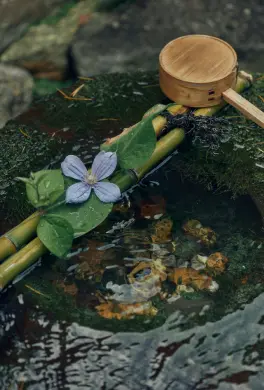
⁑ 手水 Hand-Washing
In Japan, ritual hand-washing, te-mizu, has long been part of spiritual practice. At shrines, visitors cleanse themselves in this way before offering prayers.
At Gora Kadan, this tradition inspires a quiet invitation to wash one’s hands upon entering a guest room, not only for cleanliness but also to wash away the distractions of daily life.
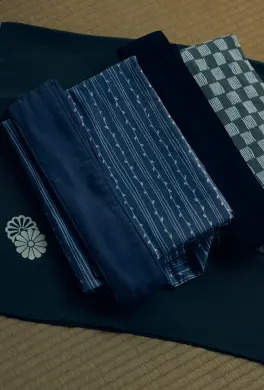
* 浴衣 Yukata
The yukata traces its origins to the yukatabira, a simple white robe worn by nobles during the Heian period for bathing. While it offered protection from heat, it also symbolized purity, a state of physical and spiritual cleansing.
At Gora Kadan, guests are invited to spend their time in soft, breathable cotton yukata. Its loose fit and gentle texture help the body relax, while the natural fabric fosters a quiet connection to the shifting seasons and climate, gently uniting the wearer with nature.
The guest experience at Gora Kadan encourages renewal. Upon entering their rooms, guests are naturally drawn to wash their hands and change into fresh, comfortable attire. The space invites them to let go—to surrender to nature and leave daily burdens behind.
We hope each guest finds ease here, stepping away from the demands of everyday life.
Beyond comfort, we hope guests enjoy meaningful time with loved ones, quiet moments with friends, or simple reflection, lightening their spirits and restoring their souls.
Beyond comfort, we hope guests enjoy meaningful time with loved ones, quiet moments with friends, or simple reflection, lightening their spirits and restoring their souls.
03
Seamlessly Uniting Structures and Gardens and Open-Air Hot Springs
Gora Kadan is said to be the first hotel in Japan to offer guest rooms with private open-air hot springs. Its architecture follows the principle of teioku ichinyo, an enduring aesthetic that seamlessly unites garden and structure, allowing guests to experience nature outside and from within their living spaces.
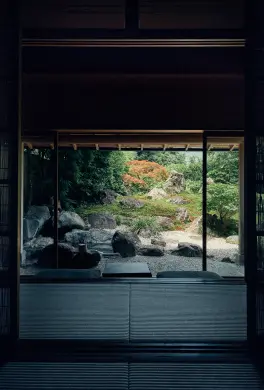
⁑ 庭屋一如 Teioku Ichinyo
This aesthetic seamlessly connects gardens and structures connected. It is grounded in Shinto’s belief everything in nature is sacred, and reflects an ancient desire to create spaces that harmonize with nature.
Gora Kadan considers every space in relation to its surroundings. It aligns architectural lines with the landscape so guests not only admire nature but also immerse themselves in a reverential time and space.
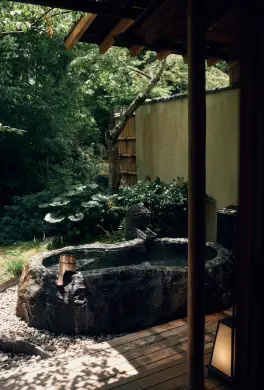
* 露天温泉 Open-Air Hot Springs
The Japanese have long revered hot springs as gifts from the gods of the earth and a source of healing for a wide range of ailments. This veneration gave rise to a culture of therapeutic bathing, soothing illness, injury, and everyday fatigue.
Each guest room at Gora Kadan features its own open-air hot spring bath, allowing guests to enjoy the experience in complete comfort and privacy, free from concerns or interruptions.
At Gora Kadan, every part of the structure is designed to reflect the surrounding landscape.
Soaking in the open-air hot spring allows guests to fully immerse themselves in nature and gently reconnect with themselves, away from the hustle and bustle of daily life.
Gora Kadan’s spaces foster quiet reflection, subtly guiding guests toward meaningful moments with family, close friends, and their own inner thoughts.
